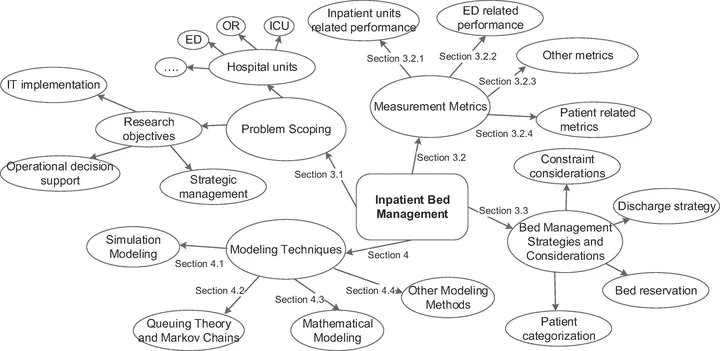A systematic review of research design and modeling techniques in inpatient bed management

Abstract
The proper allocation of limited hospital bed resources is a complex problem caused by uncertainties in patient length of stay, fluctuations in demands, unexpected admission decisions, patient recovery status, and other factors. Hospitals in the United States usually have a dedicated bed allocation team that assigns the beds and works as a bridge between the resource departments (such as emergency department (ED), operating rooms (OR), labor and delivery (L&D), and referrals) and the inpatient units (such as intensive care units (ICU), step-down units, and medical or surgical units). Prolonged inpatient length of stay because of non-clinical need increases hospitals cost and can reduce patient satisfaction. This paper provides a systematic review of recent research on inpatient bed management and evaluates a range of problem definitions, measuring metrics, and decision support techniques in the reviewed studies. We search related articles from 2013 to 2017 on Google Scholar, PubMed, and Levy Library databases using keywords such as “bed management,” “bed assignment,” “bed planning,” and “bed allocation.” We categorize and classify these articles based on the problem settings (e.g. various practices, measurement metrics, or in-scope units) and applied methodologies (e.g. queueing theory, simulation, integer programming, etc.). Moreover, recent research trends, research gaps, and future research directions on inpatient bed management are summarized and presented at the end of this study. As a high-level conclusion, simulation modeling is the dominant technique being used in studying inpatient bed management, and there are opportunities in considering system-wide inpatient flow, applying heuristic methods, and integrating predictive models in inpatient bed management and allocation optimization.